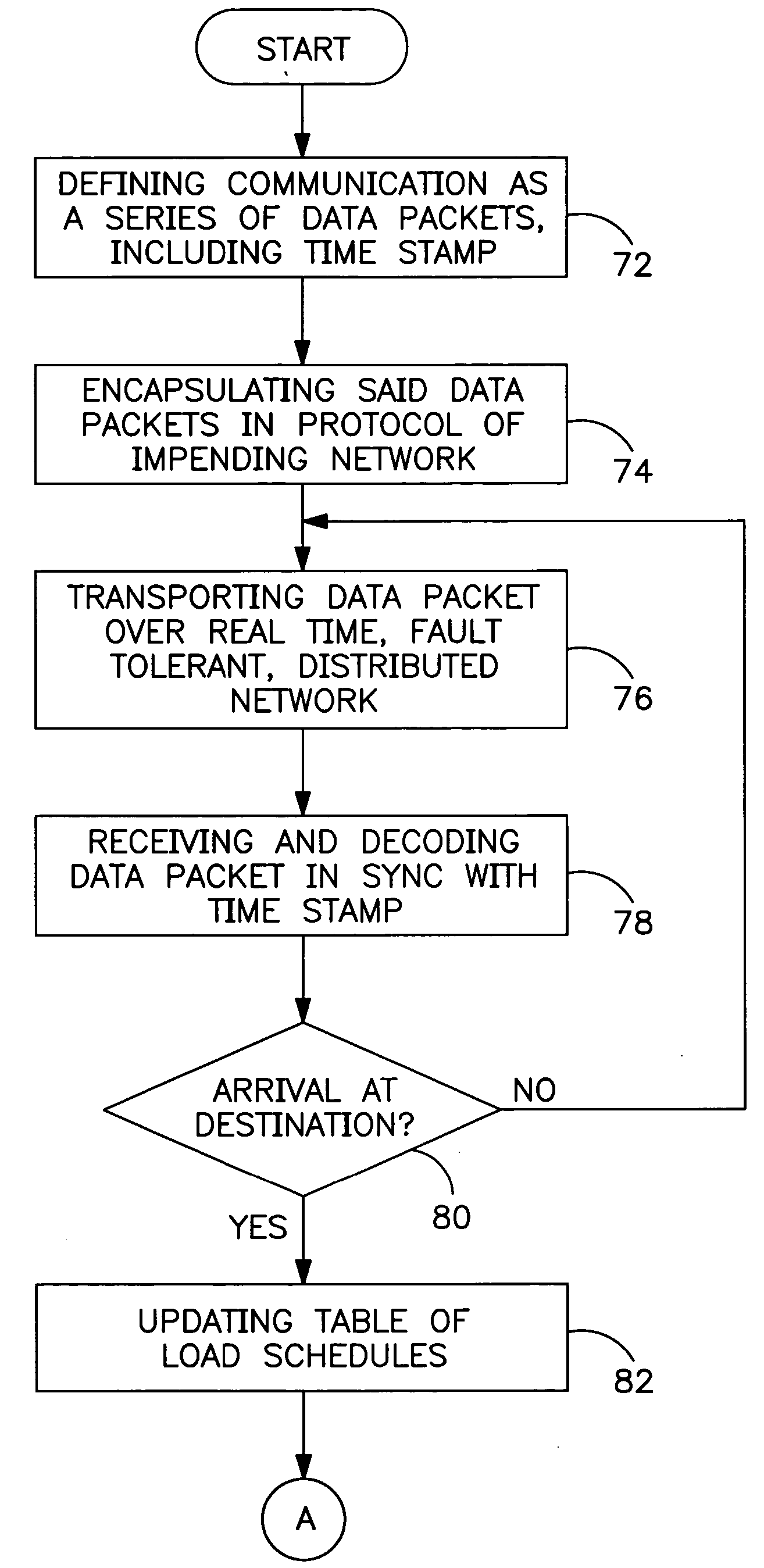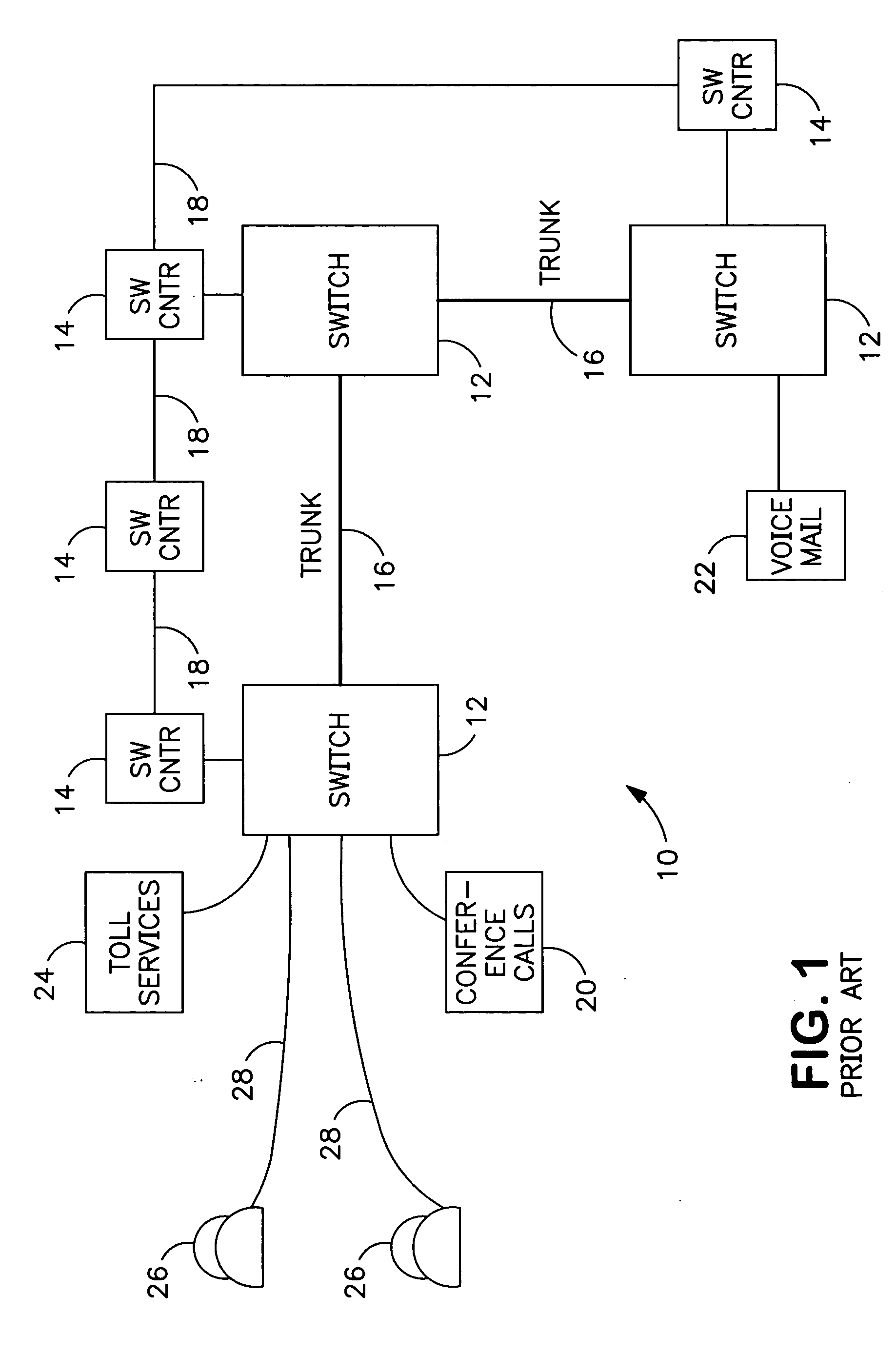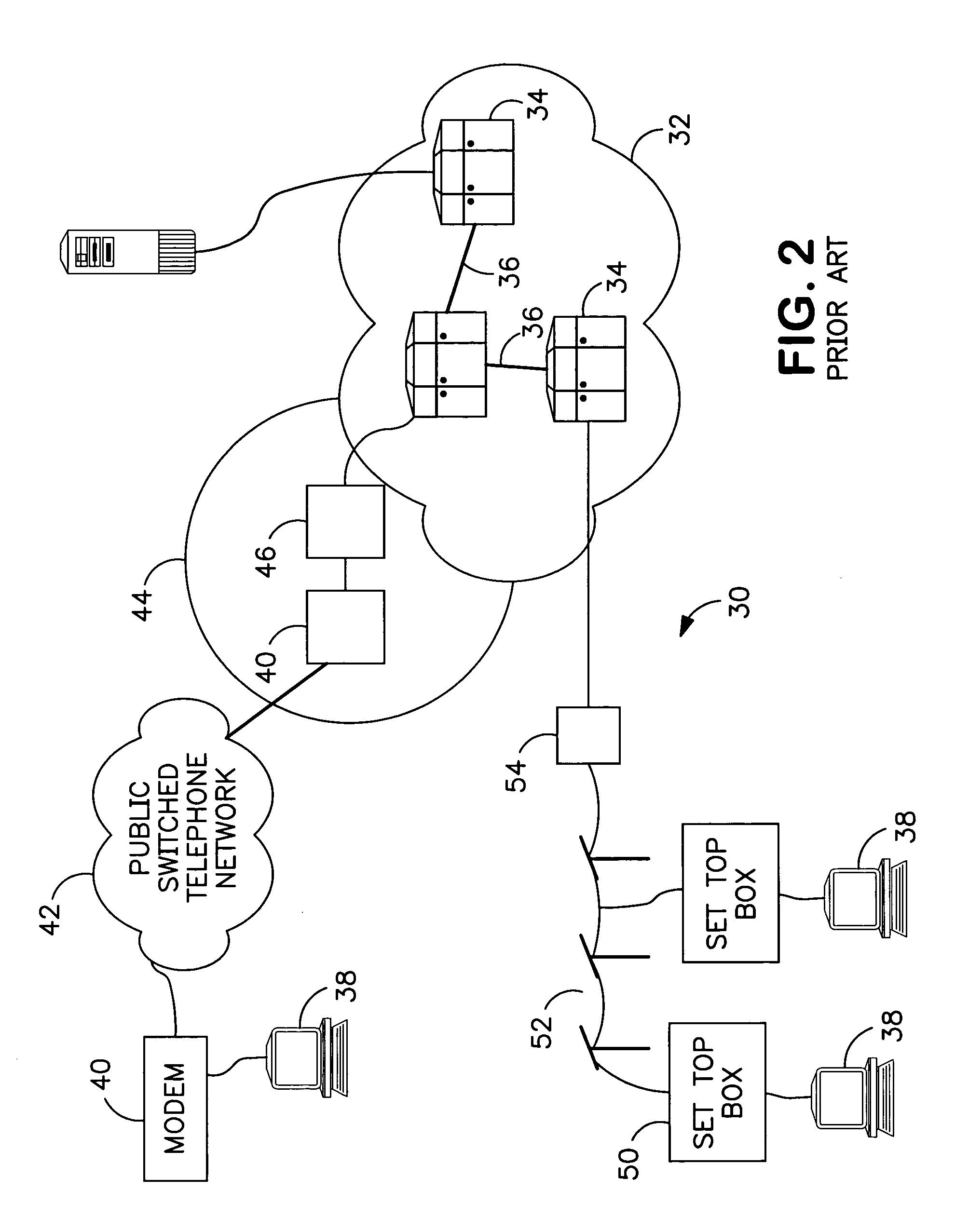One design challenge is that the needs of users at the terminals are very varied, but the backbone networks must
handle highly standardized loads in order to operate reliably and efficiently.
Telecommunications systems need to process the data flowing through them in complex ways, often with
processing occurring on computer systems separated both geographically and administratively.
The
software needed to control these computer systems is generally large, complex and difficult to change.
These services will need new families of features to be overlaid on the existing network, making the
software development task even more complex.
This makes the development of communications applications slow due to the complexity of handling many cases.
This limits the speed with which new features can be introduced since new hardware has to be designed, tested, manufactured and deployed.
The fixed assignment of tasks also makes it impossible to share loads between different types of hardware, for example to use idle tone-decoding hardware to help with an overload of voice-conferencing.
These telephony features are in fact little used by members of the public, because the
user interface is difficult to understand.
Changes to existing telecommunication networks 10 are therefore very complicated to make.
Therefore, existing telcos can not offer new features such as high
quality voice.
As well, existing telco's take a long time to bring such features to market.
The complexity of present telecommunications systems
software, and the extensive interactions between its software components, makes the development of new features very difficult.
Another complexity is that new services had to be backward compatible to
handle their existing clientel.
Software development is therefore limited to a “closed” group of trusted developers, which reduces the talent
pool available and shuts out developers with new ideas for niche markets.
Therefore, telecomm providers would not be encouraged to offer varied services at a cost reduction to users, for example, reduced quality of voice telephony on Christmas Day, simply to provide additional connections or reduced cost.
As well, small niche markets have gone unserved completely as the cost of developing and implementing the additional products does not net sufficient profits.
This is similar in concept to the use of a telephony API to control a PBX, but security concerns are of prime concern because of the number of telephone users who would be inconvenienced by a failure.
Parlay, TAPI, J-TAPI and similar systems permit third parties a degree of control over how telephone switches interconnect end users and specialized equipment such as voice-conferencing servers, but do not allow third parties to add new features such as
encryption or voice coding.
They are also unable to describe the handling of
Internet traffic, and so it is necessary for a distinct
system to be used to handle such functions as routing Internet browsing data through computers acting as security firewalls.
A key difficulty is that the functions that the embedded computers in the mobile telephone can perform are fixed in advance, programmed into them with read-only memories and limited by the capabilities of the
standard protocol used to communicate with the basestations.
The voice compression algorithms used to reduce
data traffic, for example, are fixed in advance and cannot be easily changed when a new
algorithm is developed.
Networks for telephony and
data transmission have developed separately, but the economic rationale for having distinct physical networks is very weak and therefore the technologies are converging.
Disadvantages are that it does not allow specification of processing to be performed on data streams and that it does not accurately specify requirements on
quality of service.
It has had limited acceptance due to the complexity it adds to backbone networks and the need for their switching hardware to be updated, and it fails to include mechanisms to specify the costs associated with the QoS demands that it makes.
ATM networks have typically been deployed in the core of backbone networks because of the high speeds at which ATM equipment operates, but their capabilities have not been directly visible to end users (because of the dominance of IP as an applications standard and the high costs of ATM equipment).
Because ATM routers are not directly accessible and because of the complexity of their mechanisms for describing QoS, these mechanisms have not been used by applications software.
Also, these QoS mechanisms, like RSVP, do not include methods by which to describe the costs associated with a QoS demand.
Variants are also evolving of each major type of network, and
engineering differences between implementations of these networks result in different performance.
The access networks known in the art have severe limitations that come from their having been designed for overly narrowly defined telecommunications applications, such as telephony or
file transfer.
 Login to View More
Login to View More  Login to View More
Login to View More 


